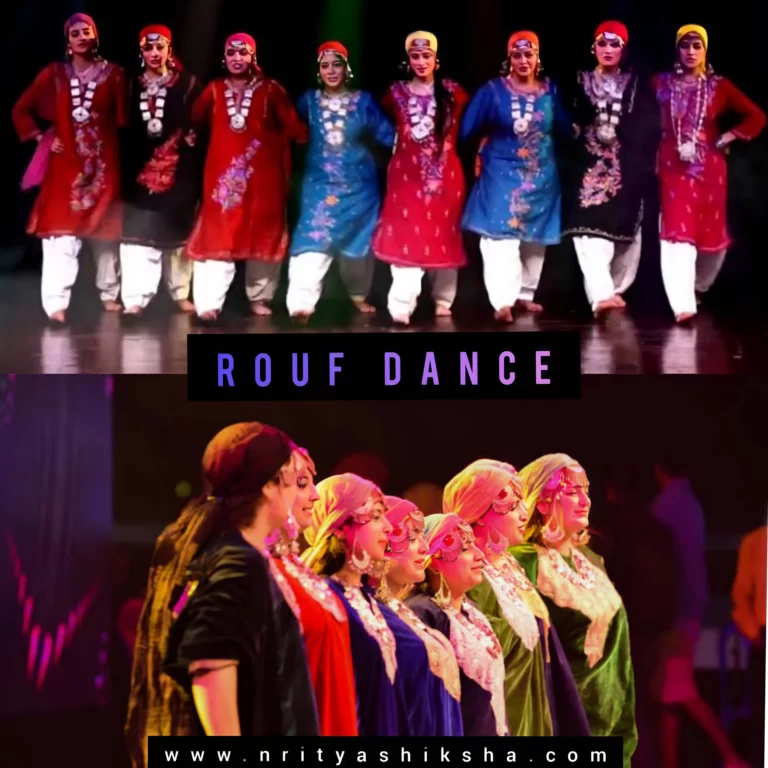Huttari Folk Dance: The Vibrant Folk Dance of Karnataka
Huttari folk dance of Karnataka
The Huttari or Hattari dance is one of Karnataka’s most famous folk dances. It is made only during the harvest season by the Kodvas living in the Coorg district of Mysore. A festival of the same name is also held during this dance. This dance is usually performed by men in fine clothes. The Hutari Festival is an annual harvest festival. The Festival is the largest of the three festivals and is celebrated by most of the communities in Coorg (Kodagu). It is usually celebrated in November-December of each year.
History of Huttari dance
The Huttari dance form originated in Karnataka, developed by the Kodva people living in the Coorg district. This folk dance was made many years ago and has a -year-old tradition.
About the Dance
The Hattari is a type of folk dance initiated by the people of Coorg. Men in flamboyant and colorful costumes perform this dance. Women do not participate in this dance form. Men can be seen dancing to the sound of drums and horns. Traditionally, dancers have been seen using shields holding in their hands, and in modern times has replaced with walking sticks. The dance consists of many movements and steps, including, which are combined to form a large ring or circle. This dance form includes steps and is inspired by the tandav style. They use the foot by raising their feet and, then measuring their right side and jumping.
Kodava Tribe:
Kodava is a well-spoken ethnic community from Kodagu, Karnataka. They originally spoke Kodava, a language bearing their name. Most Kodawa are agronomists with martial skills. Kodavalar are the only ones in India capable of carrying unlicensed guns and other weapons. Kodavas spend their time mostly harvesting, which includes protecting crops from wild animals. Apart from this hard work, Kodavas also celebrates the harvest of “Puttari” which means “fresh rice”. It is held in November or December every year. On the day of the festival, every house is decorated with mango leaves and marigolds. The festival begins with a gun marking the start of the harvest season and then continues with the grain being carried from home to the gods. Young people visit their neighbors and show off their dancing skills.
Huttari Dance Costumes
Dance costumes and dance forms differ depending on the different forms of the Huttari dance. Men mostly wear conventional Kodava outfits with fancy knives. The Kodava outfits precisely differ as per the dance form performed. Huttari dance has different forms:
Bolak- aat
The Bolak-aat dance is performed by the Kodawa people. They burned the batteries in the open, dressed in black. They hold the Kodava sword in one hand and the chavri (yak skin) in the other. The dance was performed by the sound of Doody, a clock-shaped drum.
Ummatt-aat
Ummat-aat is performed by Kodawa women in traditional Kodawa clothing. He wore a red silk sari and a long-sleeved red Coorg shirt, and a red scarf wrapped around her head. They also wear bracelets, necklaces, and other trinkets. The dance number is performed with spinning bridges and a swinging melody. Girls holding out loud (tws). In the center stands a woman holding a water bottle reminiscent of Mama Kaveli.
Kamb-aat
Komb-aat is a traditional dance performed in temples by the Kodava people. While playing tunes on woodwinds and drums, they carry antlers symbolizing the antlers of ‘Krishna murga’ (a deer in the Kodava epic).
FAQ for Huttari Folk Dance:
Q: What is Huttari folk dance?
A: Huttari is a traditional folk dance form that originated in the state of Karnataka, India. It is performed during the Huttari festival, which is celebrated by the farming communities.
Q: When is the Huttari festival celebrated?
A: The Huttari festival is typically celebrated in November or December, marking the beginning of the harvest season.
Q: What is the significance of Huttari folk dance?
A: Huttari folk dance is a way for the farming communities to express gratitude for a good harvest and seek blessings for a prosperous future. It also serves as a means of social and cultural bonding among the community members.
Q: How is Huttari folk dance performed?
A: Huttari folk dance is performed in a group, with both men and women participating. The dancers form a circle or a semi-circle and move in rhythmic patterns, accompanied by the beats of traditional musical instruments like drums and pipes. The dancers often wear colorful traditional attire and adorn themselves with jewelry.
Q: What are the key features of Huttari folk dance?
A: Huttari folk dance is characterized by energetic and vigorous movements, footwork, and graceful gestures. It often incorporates elements of storytelling, depicting the various stages of farming, from sowing seeds to reaping the harvest.
Q: Who can perform the Huttari folk dance?
A: Huttari folk dance is primarily performed by members of the farming communities in Karnataka. However, it is not limited to them, and anyone who appreciates the art form can learn and perform it.
Q: Are there any specific rituals associated with Huttari folk dance?
A: Yes, the Huttari festival and the dance are often preceded by certain rituals, including offering prayers to the deities associated with agriculture and seeking their blessings for a bountiful harvest.
Conclusion:
Huttari folk dance holds a special place in the cultural heritage of Karnataka, India. It not only celebrates the abundance of nature but also reflects the unity and joy of the farming communities. The energetic movements, rhythmic beats, and colorful costumes create a vibrant atmosphere during the dance performances. Huttari folk dance serves as a reminder of the deep connection between humans and the land they cultivate, and it continues to be cherished and passed down through generations, keeping the rich cultural traditions alive.






